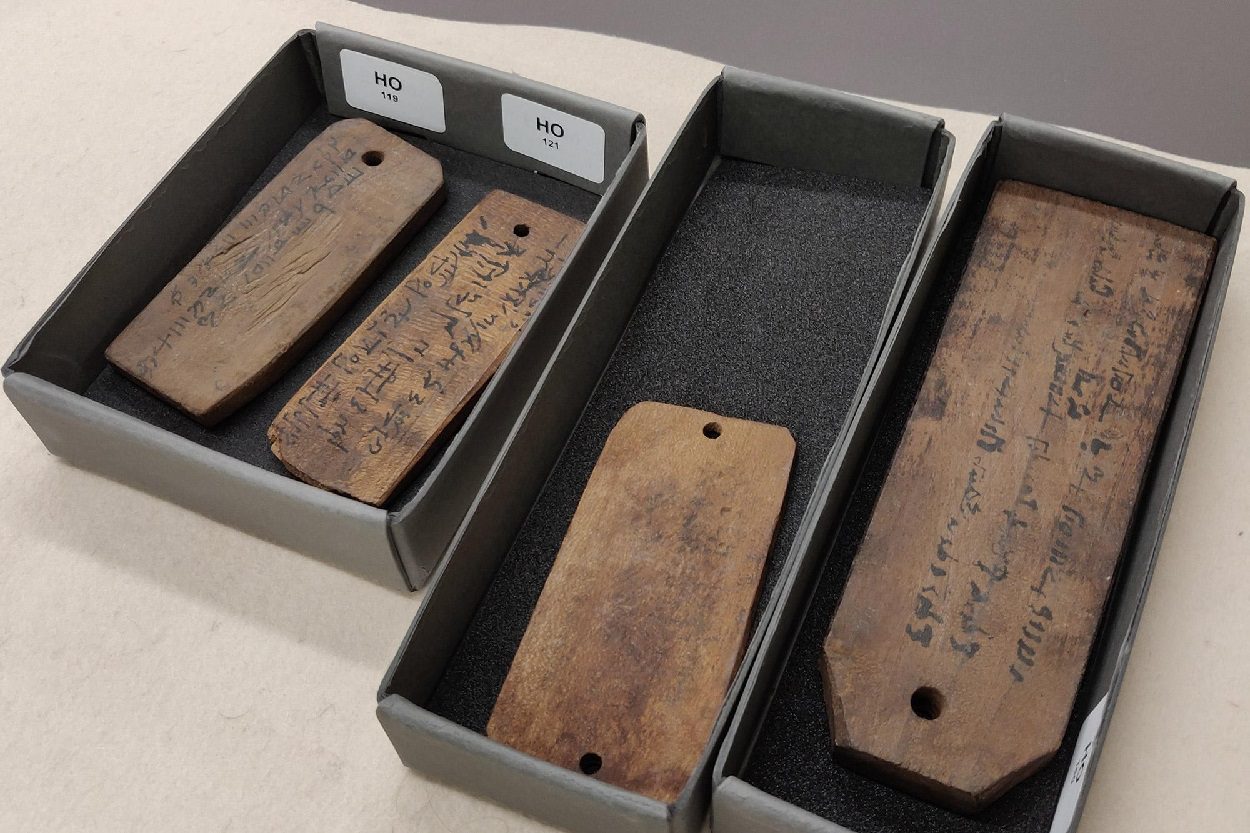A project funded by the Swiss National Science Foundation (SNSF) is using mummy labels to help reconstruct the climate of Roman Egypt.
Mummy labels are small labels made of wood, faience, or ivory, that were attached to mummies during the Ptolemaic and Roman periods.
The label would generally have an inscription written in Greek or demotic (and sometimes in hieratic or hieroglyphs) that named the deceased, their family, or a short prayer for the afterlife. The labels were used as a means to identify the deceased after the mummification process for when they were being transported to a necropolis for burial.
These small labels could even play the role of a cheap substitute for funerary stelae, as sometimes indicated by their shape and the fact that they could be identified as wy.t or στήλη “stela.”
As part of a new study, researchers are analysing the tree rings on the wooden labels in a process known as dendroclimatology. This reveals a wealth of climatic data, as tree rings are wider when conditions favour growth and are narrower when times are difficult during periods of drought.
The results of the study are published in the International Journal of Wood Culture, where the researchers analysed 300 labels and looked for matching sequences to give a broader view of what the climate was like in the areas of the eastern Mediterranean, in modern-day Lebanon, the Greek islands, or the mouth of the Nile during the period of Roman Egypt (30 BC – AD 641).
“That’s why mummy labels are ideal for our purposes”, explains François Blondel, an archaeologist at the University of Geneva. “Not only are there thousands of them in museums around the world, they’re made from lots of different tree species, such as pine, cypress, cedar and juniper”.
There are a few good years here and an unfortunate succession of droughts there, but the actual dates are still unclear, François Blondel explains. “We can’t yet assign a precise date to the rings and the events they record”.
The next step going forward will therefore be to locate these events in history. With luck, the scientists will find a datable specimen. Then, by looking for overlaps with other labels from the same tree species and region, they should be able to pinpoint the exact date. If not, they will have to resort to radiocarbon dating.
By combining several samples of wood taken along the rings of the same specimen, it is possible to statistically reduce dating uncertainty – to virtually zero in the best-case scenario. The scientists still have to find the right specimens and, above all, obtain permission from museums for invasive radiocarbon analysis.
https://doi.org/10.1163/27723194-bja10017
Header Image Credit : SNSF





